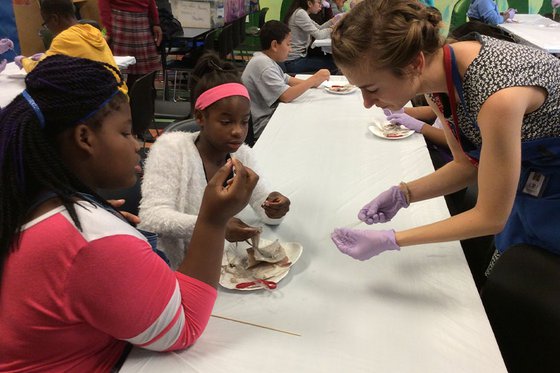Our education team is regularly testing new ideas for programs to complement the new exhibit, Saltwater Stories: We need the sea and the sea needs me!
Testing Programs at the Smithsonian Institution’s National Museum of Natural History
April 2023: Claire D’Emic (LICM’s STEM Initiatives Program Director) traveled to Washington, D.C. to test a program idea for Saltwater Stories. One of the Saltwater Stories advisors, Patricia Pinto da Silva from NOAA, connected us with the staff at the Museum of Natural History. The concept was to try out an educational program with their audience to see how it worked and to gather some feedback.
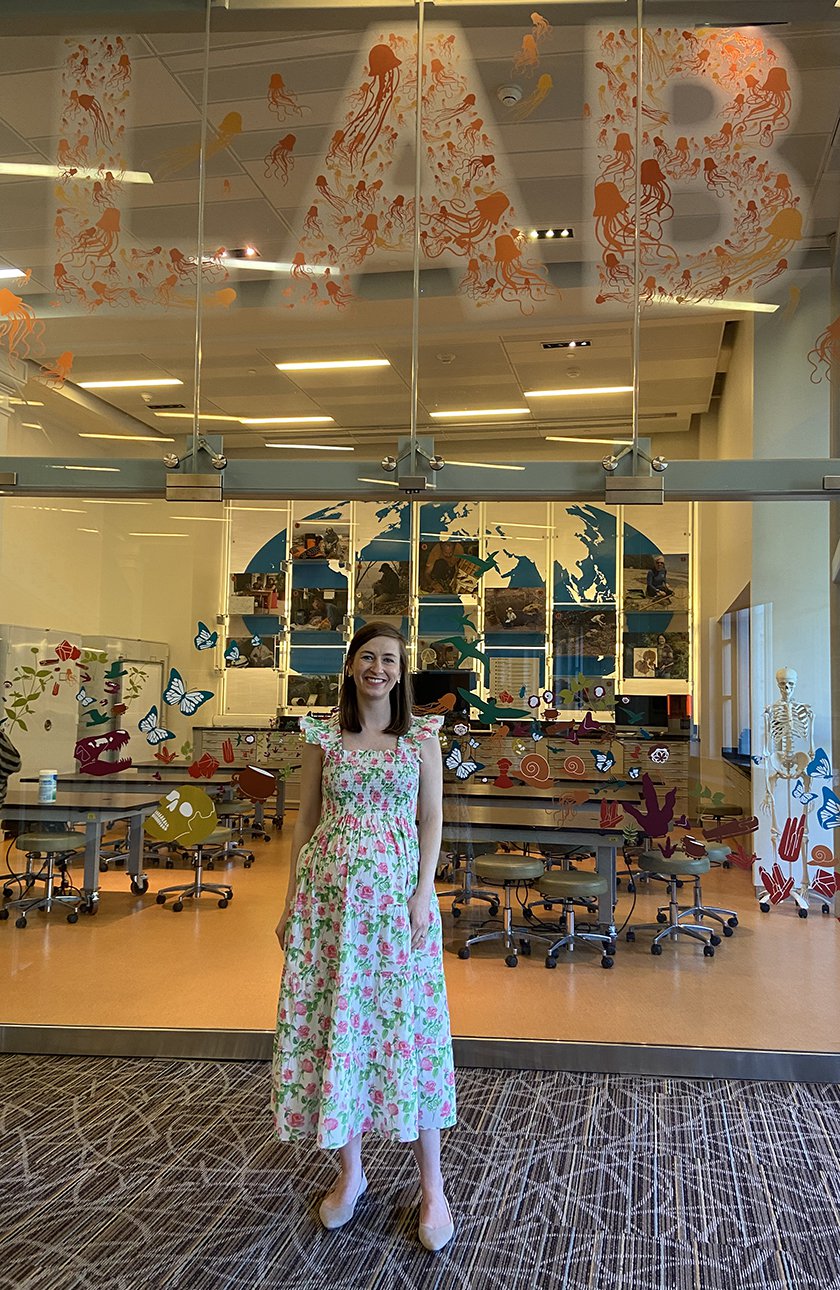
While in D.C., Claire taught a family workshop about engineering storm surge solutions.
Through this experience, Claire was able to gain an understanding of how familiar families were with the concept of storm surge, find out how interested they were in learning about it, and experiment with different ways of engaging families in co-learning. Participants were from all over the United States, including Connecticut, North Carolina, D.C., Maryland, and Virginia, all they all had personal connections to the water that helped them to relate to the content.
While the term "storm surge" may have been unfamiliar to families, all of the families were able to understand its meaning. Many families shared experiences about encountering a storm. The activity portion was open-ended in a way that allowed the families to discuss and consider different solutions. Because each family was at their own table, they could operate as their own little unit.
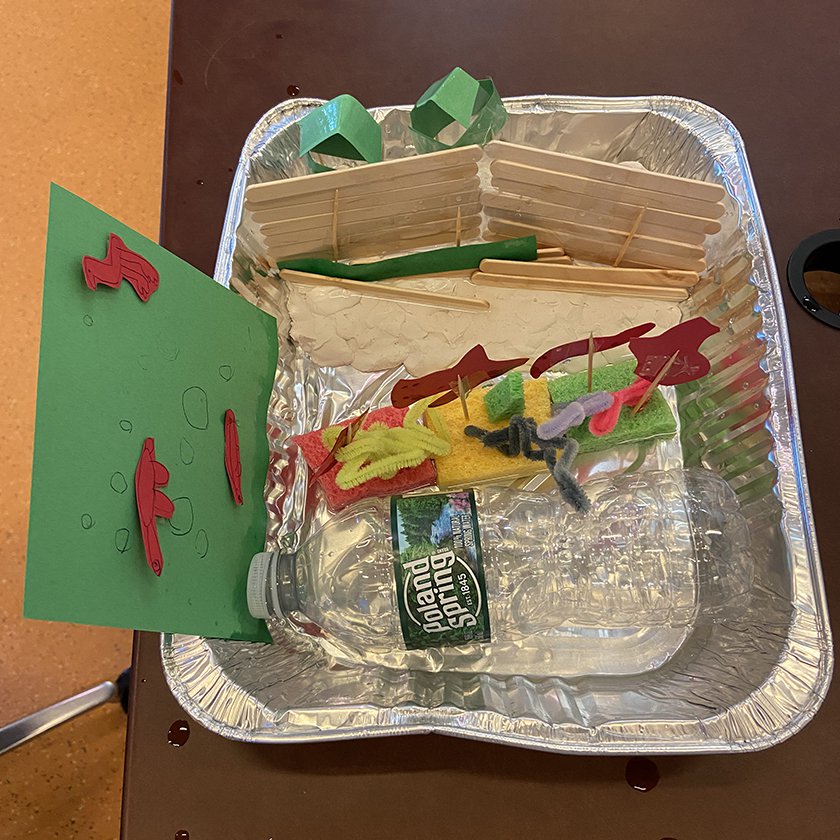
Claire's lesson explored different human-made and natural solutions to mitigating storm surge, and it was enlightening for our education team to see how the families decided to design their own solutions.
This proved to be a successful workshop, and it will become an activity in the rotation of programs to complement Saltwater Stories.
Maps of Long Island
During the Summer of 2022, we piloted several new workshop options that can complement the Saltwater Stories exhibit.
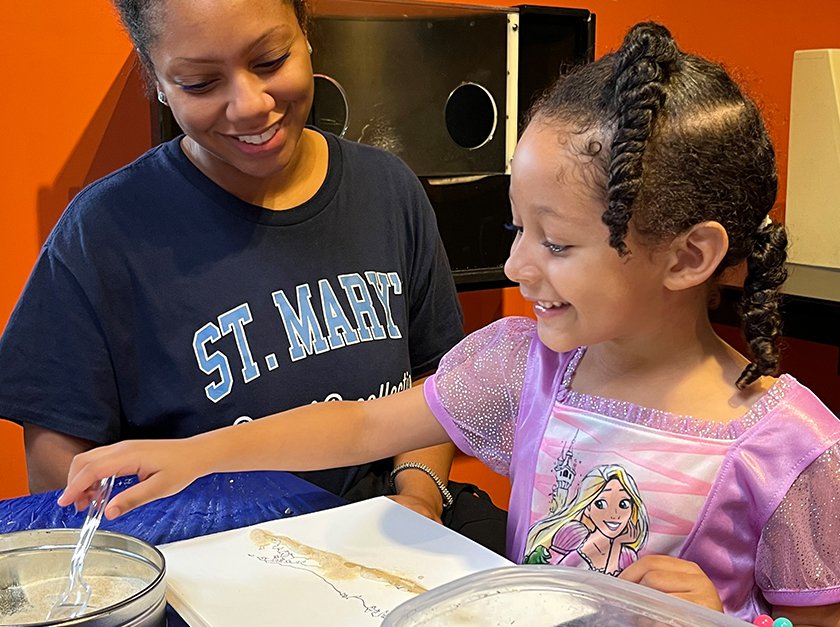
Families took a closer look at what the map of Long Island looks like and then used natural materials to create a textured map of their own to take home. (Summer 2022)
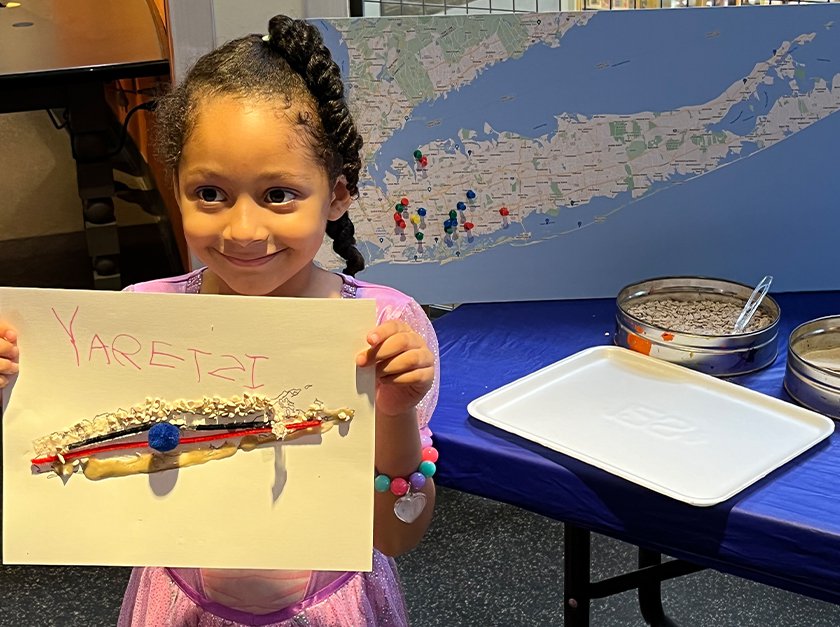
Visitors’ maps showcased natural features of Long Island, including the rocky north shore, the sandy south shore, the two glacial moraines depicted by pipe cleaners, and the largest kettle lake noted with a blue pom-pom. (Summer 2022)
Haiku and Japanese Koinobori (“carp streamer”)
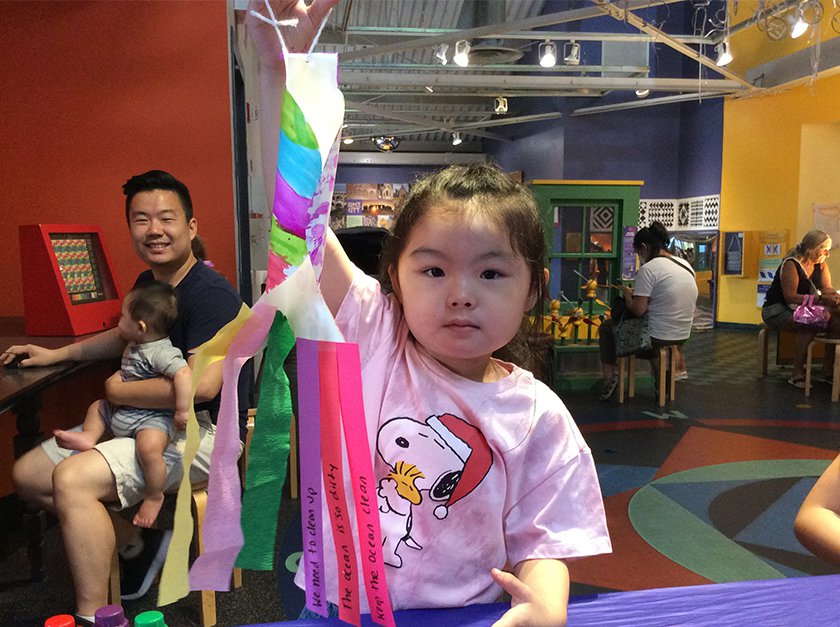
Our young visitors contemplated one of three questions: (1) What is your favorite thing to do at the beach? (2) Why is the ocean important? or (3) How can we help the ocean? to help prepare them to write a haiku. (Summer 2022)
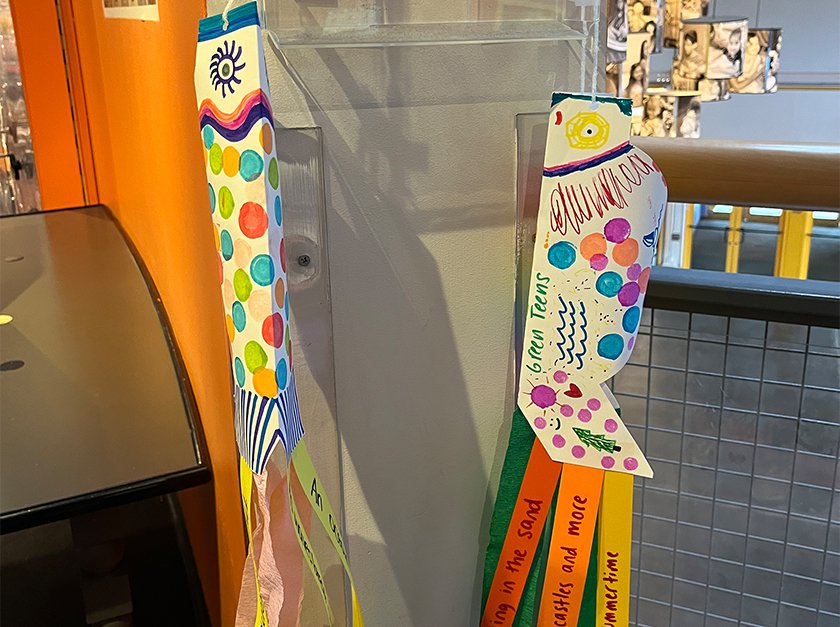
Each child decorated a windsock, then attached their haiku to the tail of their koinobori, combining art and poetry as a way to connect to the sea. (Summer 2022)
Sorting Seashells
Friendly paper bag puppets help a visitor identify and then sort different seashells. This might be an activity you do with a volunteer in the Saltwater Stories exhibit. You could sort seashells that you collect at the beach by color, size or texture – anything you choose! Developed Fall 2022.
What We Already Know
Some concepts for Saltwater tie-in workshops are based on our tried and true programs that have been part of LICM for many years.
Squid Dissection
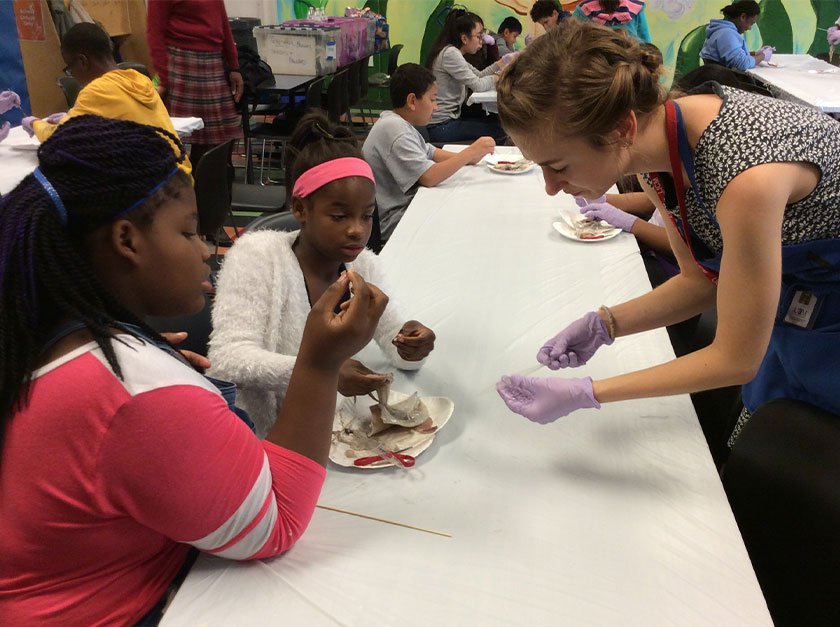
Squid Dissection – Here are the Enrichment 2 Excellence students doing their very first dissection! They learned about the internal and external anatomy of squid, as well as the ecology.
Gyotaku
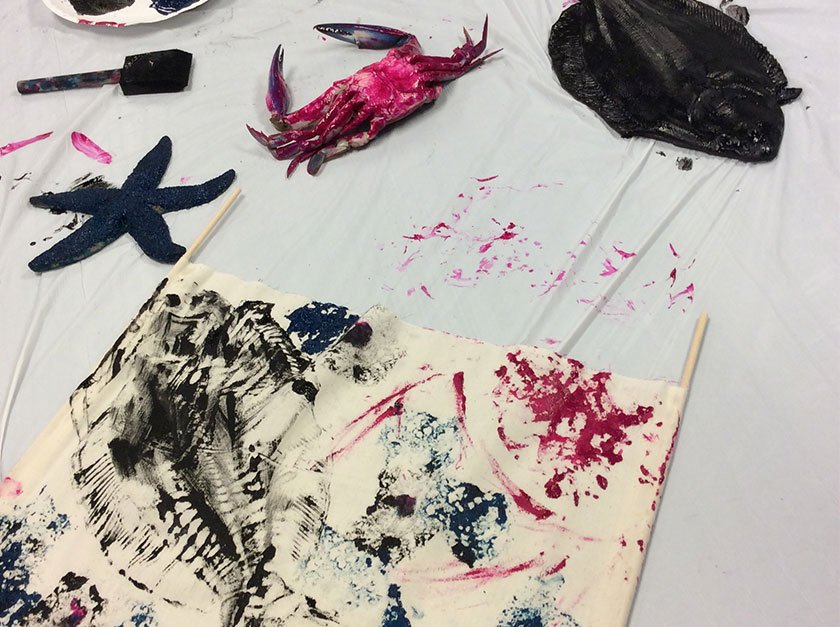
Japanese Gyotaku Printing – During this Enrichment 2 Excellence lesson, students used real fish and other sea creatures to create gyotaku prints and learned how it became an art form. (Fishermen in the mid 1800s used it as a way of recording their catch.
Trial and Error with Buoyancy
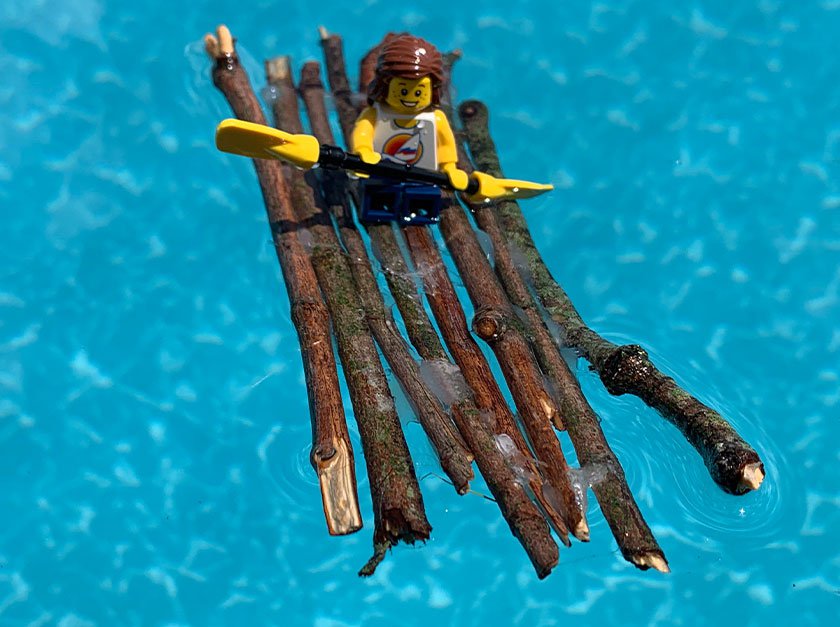
Make a boat that floats!
Fish Dissection
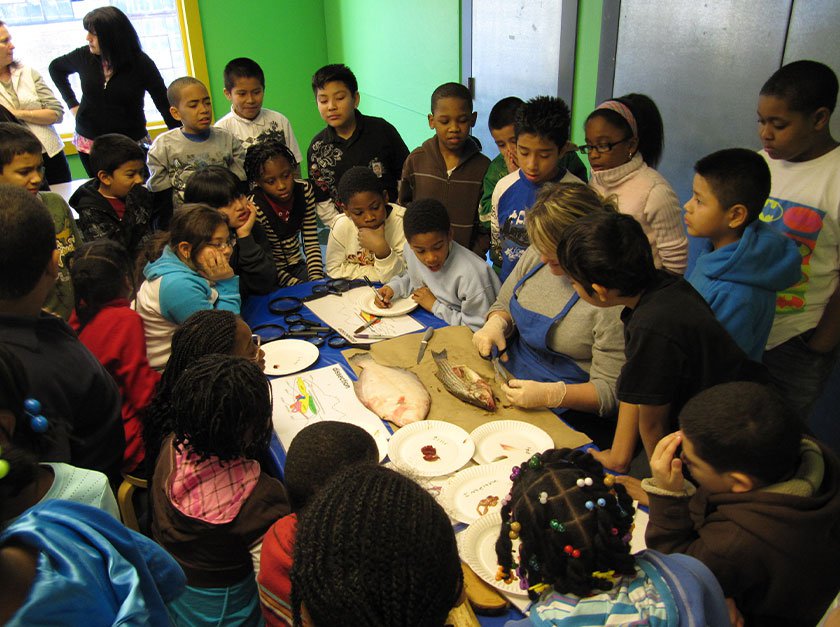
Here are students from Westbury School District watching as an LICM educator dissects a fish. Always very popular!
This project is made possible in part by the Institute of Museum and Library Services and Humanities New York.


